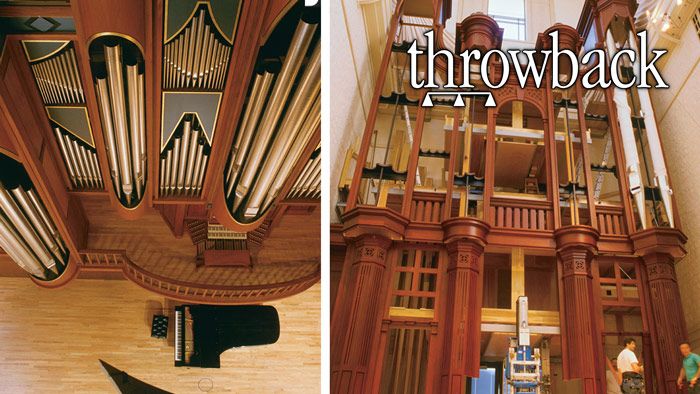Woodworking on a Grand Scale
Pipe-organ builders combine 500-year-old designs with modern materials
Originally published Aug 1, 1996
Synopsis: Fine Woodworking’s Aimé Fraser visits pipe-organ builders, who say that their work is pretty straightforward woodworking. It’s just that there’s a lot of it. Building a pipe organ is a nearly two-year job with multiple woods that will weigh, when finished, more than 19,000 lb. and contain more than 3,800 pipes. Old, European styles of craftsmanship won’t work in the United States, because seasonal movement is three times greater in the U.S. Builders study the old pieces, but merely as guides. Fraser explains tracker keyboards and why they’re sought after, and she details the tools the builders use to create such magnificent pieces.
From Fine Woodworking #119
Shavings litter the floor, and the tang of resin fills the air. A Bach fugue pours from distant speakers, but the real music in the shop is the sound of sharp plane blades on clear, quartersawn fir. Robert Lange and Dominick Parker, organ builders at Paul Fritts & Co. in Tacoma, Wash., are smoothing panels that will become part of the crown on the first level of a large organ case. Wide, lacy shavings curl from their wooden planes. They are two months into an almost two-year-long job. Fifteen feet to their right, under the peak of the four-story roof, stands the foundation and lower framework of a 54-stop Baroque-style organ (see the photo on p. 85). They’re building the case the same way organ cases were built 500 years ago— solid-wood frame-and-panel construction with mortise-and-tenon joints, splined miters and decorative dovetails. By the time the case is done, Parker figures they will have cut and fitted more than 300 mortises and tenons. There will be more than 25 sets of dovetails for the corners of the three levels of crowns, dozens of splined miters for the pipe towers and miles of molding. That doesn’t even take into account the woodworking required to build and fit the panels into the mortised-and-tenoned frames. Before the panels go in, Parker and Lange will install the keyboards and wind-distribution system, as well as the thousands of tiny parts that connect the two. “Organ building is pretty straightforward woodworking,” says Parker. “It’s just that there’s so much of it.”
A year and a half from now, when this organ is finished, its highest point will just fit under a beam 35 ft. off the shop floor. It will weigh more than 19,000 lbs. and contain more than 3,800 pipes. Most of this colossal instrument will be made of wood. The case is made of fir, the duct work is poplar and the keyboards are basswood and ebony.
For the full article, download the PDF below:

















Log in or create an account to post a comment.
Sign up Log in